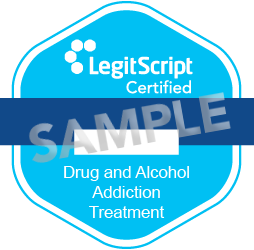Finding Hope: Dilaudid Addiction Treatment at MBO
Overcoming Dilaudid dependence is possible with the right help. Explore our Texas-based, comprehensive Dilaudid addiction treatment programs below.
Table of Contents
Addiction Isn’t a Life Sentence
The grip of addiction can feel inescapable, especially when it involves a powerful opioid like Dilaudid. But, there’s always hope for healing and a path forward.
At Mind Body Optimization (MBO), we understand the unique challenges of Dilaudid addiction and are committed to providing holistic, individualized care to support sustainable treatment.
Our Dilaudid addiction treatment options provide a comprehensive approach to client care, ensuring that each person who visits us gets the help they need.

What is Dilaudid?
Dilaudid is the brand name for hydromorphone. It is a potent prescription opioid painkiller that is 2-8 times stronger than morphine.1
While effective for managing severe pain, Dilaudid also carries an extremely high risk of addiction when misused. In fact, the U.S. Drug Enforcement Administration classifies hydromorphone as a Schedule II controlled substance, the highest level of regulation for prescription drugs.2
The National Opioid Epidemic
Nationwide, the opioid epidemic has reached staggering proportions. In 2022, an estimated 1.2 million Americans aged 12 or older used hydromorphone products, with 99,000 misusing them.3
Tragically, as many as 44 people in the U.S. die every day from prescription opioid overdoses.4
Opioid Addiction in Texas
Here in Texas, communities are also grappling with the devastating impact of opioid addiction. Recent statistics show as many as 1 in 4 Texans have experienced an opioid overdose or know someone who has.5
But, there is hope on the horizon as more people seek Dilaudid addiction treatment. At MBO, we are dedicated to being part of the solution, providing compassionate, evidence-based care to help individuals break free from Dilaudid addiction and rebuild their lives.
We are committed to creating a healthier community — one individual at a time.
Dilaudid Addiction Treatment: Understanding Dilaudid Addiction
For effective Dilaudid addiction treatment, it’s crucial to understand how this powerful drug affects the brain and body. It works by binding to opioid receptors in the central nervous system.
This blocks pain signals but also triggers a flood of dopamine, the brain’s “feel-good” chemical. The euphoric high and feelings of relaxation can quickly lead to addiction with repeated misuse.
Several factors can contribute to the development of Dilaudid addiction, including:
- Genetic predisposition to addiction
- Underlying mental health disorders like depression or anxiety
- Chronic pain conditions requiring long-term opioid treatment
- Easy access to prescription opioids
- Associating with peers who misuse Dilaudid
Symptoms of Dilaudid Addiction
Common signs and symptoms of Dilaudid addiction include:
- Taking larger amounts than prescribed
- Obsessing over the next dose
- Doctor shopping to get multiple prescriptions
- Crushing and snorting pills for a stronger high
- Isolation from family and friends
- Neglecting responsibilities at work or school
- Mood swings and irritability
- Flu-like withdrawal symptoms when use is reduced
If you recognize these warning signs in yourself or a loved one, know that help is available. Reaching out is a sign of strength, not weakness.
At MBO, we understand how difficult it can be to break the cycle of addiction, which is why we take a whole-person approach to treatment and wellness.
Comprehensive Assessment and Planning for Dilaudid Addiction Treatment
Dilaudid addiction is a complex disease that affects each person differently. There’s no one-size-fits-all solution. That’s why at MBO, we begin with a comprehensive evaluation to understand the full scope of a person’s needs: physically, psychologically, socially, and spiritually.
Our assessment process may include tools like the Addiction Severity Index. This is a structured interview that examines how addiction impacts different areas of functioning. We also explore a person’s wellness capital–the internal and external resources they can draw upon to support their healing journey.
We collaborate closely with each client to create an individualized treatment plan tailored to their unique situation, goals, and preferences. We understand that the individual is the expert on their own experience.
Factors Considered in Dilaudid Addiction Treatment
Our role is to provide guidance, support and evidence-based interventions to help clients achieve their vision of well-being.
Some of the key components we consider when building a personalized treatment plan for Dilaudid addiction include:
- Level of care needed
- Appropriate therapies and interventions
- Strategies to address co-occurring mental health concerns
- Building wellness capital and support systems
- Medication needs for detox and maintenance
- Complementary approaches to support holistic healing
Throughout the treatment process, we continually reassess and adjust the plan as a person’s needs evolve. Our goal is to provide the right level of support at every stage of treatment to promote lasting success.
Medical Detoxification and Stabilization in Dilaudid Addiction Treatment
For many people struggling with Dilaudid dependence, the first step in treatment is medical detox to safely withdraw from the drug. Abruptly stopping opioids after prolonged use can trigger intensely uncomfortable and potentially dangerous withdrawal symptoms.6
Common Dilaudid withdrawal symptoms include:
- Nausea, vomiting, and diarrhea
- Severe muscle and bone pain
- Uncontrollable leg movements
- Insomnia and restlessness
- Cold flashes and goosebumps
- Severe cravings
Importance of Medical Detoxification
Trying to detox alone can be risky and significantly increases the chance of relapse. Medically-supervised detox provides a safe, controlled environment to manage acute withdrawal and begin the healing process.
During detox, medical professionals may use medications like buprenorphine or methadone to reduce symptoms and cravings. These are long-acting opioids that help stabilize brain chemistry and allow the body to gradually adjust to lower opioid levels.7
Successful detox lays the foundation for ongoing addiction treatment. It’s a critical time to connect with counselors, begin therapy, and start building a treatment plan. At MBO, our compassionate team works to provide integrative therapeutic support through every phase of the detox and stabilization process.
The Role of Therapy in Dilaudid Addiction Treatment
Once a person is medically stable, the work of Dilaudid addiction treatment continues with evidence-based behavioral therapies like cognitive-behavioral therapy (CBT) and psychoeducation.
Benefits of CBT in Dilaudid Addiction Treatment
CBT is one of the most well-researched treatments for substance use disorders (SUD).8
The core principles of CBT are that thoughts, feelings and behaviors are all interconnected. By identifying and changing unhelpful thought patterns and beliefs, people can modify their behaviors and develop healthier coping skills.
In the context of Dilaudid addiction, CBT may focus on:
- Examining the beliefs and motivations underlying Dilaudid misuse
- Identifying triggers and developing avoidance strategies
- Roleplay and rehearsal of drug refusal skills
- Building a “tool kit” of alternative coping methods
- Creating a relapse prevention plan
Psychoeducation
Psychoeducation is another key element of Dilaudid addiction treatment. Learning about the neurobiology of addiction, the effects of Dilaudid misuse, and the process of healing can be empowering. It helps people understand that addiction is a disease, not a moral failing or character flaw.
At MBO, we strive to equip clients with the self-awareness and skills they need to navigate treatment. CBT and psychoeducation are foundational tools to support that ongoing growth and healing.
Mindfulness and Stress Management in Dilaudid Addiction Treatment
Chronic stress and the inability to cope with uncomfortable emotions are common triggers for substance misuse. Mindfulness and stress management techniques are valuable tools for handling life’s challenges without turning to Dilaudid.
Mindfulness
Mindfulness is the practice of being fully present and aware of one’s thoughts, feelings, and surroundings without judgment. It’s been shown to reduce stress, improve emotional regulation, and increase self-compassion.9
Some of the mindfulness strategies we teach at MBO include:
- Deep breathing exercises
- Progressive muscle relaxation
- Guided imagery and visualization
- Grounding techniques using the five senses
- Mindful meditation practices
Stress Management Plans
We also work with clients to develop personalized stress management plans. This may involve:
- Identifying healthy outlets like exercise, journaling, or creative hobbies
- Learning to break down overwhelming tasks
- Improving the ability to set boundaries and ask for help
By cultivating mindfulness and effective stress management techniques, people build resilience and increase their capacity to handle triggers and cravings. These practices support long-term recovery and improve quality of life during Dilaudid addiction treatment.
Family Therapy and Support Systems in Dilaudid Addiction Treatment
Addiction is often called a “family disease” because it affects everyone in the person’s life.
Common issues that family therapy can help address include:
- Strained relationships
- Codependency
- Enabling behaviors
- Intergenerational trauma
In family therapy, loved ones have an opportunity to express their feelings, set healthy boundaries, and learn how to best support the person. Improved communication, problem-solving, and conflict resolution skills help the whole family system begin to heal.
Types of Family Therapy and Support Services Offered at MBO
MBO offers several types of family therapy and support services, including:
- Couples and marriage counseling
- Multi-family group therapy and workshops
- Individual counseling for family members
- Referrals to community support groups
We recognize that a strong support network is one of the most important protective factors in treatment. Family involvement in treatment improves outcomes and reduces the risk of relapse.
Our goal is to help clients repair relationships and build a foundation of love and trust.
Relapse Prevention and Aftercare Planning in Dilaudid Addiction Treatment
At Mind Body Optimization, we understand that addiction is a chronic disease. Even after completing treatment, the potential for relapse is always present.
But, by working closely with clients to develop a comprehensive relapse prevention and aftercare plan, we significantly reduce that risk and support long-term recovery.
Relapse prevention planning is highly individualized, but often includes the following critical components:
Identifying Personal Triggers and Warning Signs
One of the most important aspects of relapse prevention is developing self-awareness around the people, places, and situations that may trigger cravings or thoughts of using substances again.
Common triggers include:
- Stress
- Relationship conflicts
- Isolation
- Boredom
- Exposure to addictive substances
In collaboration with therapists, clients learn to recognize their unique internal and external triggers. They also identify the early warning signs that they may be headed toward relapse, such as changes in attitude, behavior, or self-care. By catching these early, proactive steps can be taken to get back on track.
Rehearsing Coping Strategies for High-Risk Situations
Triggers and cravings are an expected part of the Dilaudid addiction treatment journey. The key is planning ahead for how to handle them in a healthy way when they inevitably arise.
At MBO, clients work to develop a toolkit of coping strategies to navigate high-risk situations and intense emotions without turning to substances.
This may involve:
- Positive self-talk
- Thought stopping
- Urge surfing
- Calling a sponsor
- Attending a support group meeting
- Engaging in an alternative activity like exercise or meditation
Clients practice these skills during treatment so they become second nature.
Building a Sober Support Network
Having a strong network of supportive people is one of the best protections against relapse. These are the people who clients can call on for encouragement, guidance, and accountability. They provide a listening ear during tough times and celebrate milestones along the way.
MBO helps clients start building this essential support system while in treatment. Family therapy strengthens existing relationships and communication skills.
Clients connect with local support groups and begin forming a wellness community. Aftercare planning ensures a smooth transition to less intensive levels of care where these support networks can continue to grow.
Scheduling Self-Care Activities
Maintaining general wellness is critical for those in Dilaudid addiction treatment. When self-care starts to slip, the risk of relapse rises. That’s why developing healthy habits and scheduling regular self-care is a key part of relapse prevention.
This will look different for each person, but it often includes things like:
- Exercise
- Proper nutrition
- Sufficient sleep
- Stress management techniques
- Taking part in enjoyable hobbies
Having a daily routine with scheduled self-care time helps clients prioritize their well-being.
Know that self-care is not a luxury; it is a necessity.
Continuing with Therapy and Support Group Meetings
Wellness is an ongoing journey that extends far beyond a Dilaudid addiction treatment program. To sustain progress, it’s important to stay engaged with therapeutic support. This often involves continuing individual therapy sessions to keep working on underlying issues and strengthening skills.
Regular attendance at peer support group meetings like AA, NA, or SMART Recovery is also highly encouraged. These groups provide a sense of belonging, inspiration, and accountability. They are a place to both receive and provide support within a community of others walking a similar path.
Incorporating These Elements into Dilaudid Addiction Treatment at MBO
At MBO, we work closely with clients to incorporate these five components into a comprehensive relapse prevention plan before they transition out of treatment. We also offer our own alumni program to help clients stay connected and supported in their wellness long-term.
We empower our clients to find their own vision of wellness and equip them with the tools to make it a reality, one day at a time. With a solid relapse prevention plan and our ongoing support, sustainable healing is within reach.

Empower Yourself Through Dilaudid Addiction Treatment at MBO
Breaking free from Dilaudid addiction is challenging, but with the right support, it is entirely possible to achieve a vibrant life. At Mind Body Optimization, we believe that whole-person, individualized care is key to helping people find sustainable healing.
If you or a loved one is struggling with Dilaudid addiction, know that you are not alone and help is available. At MBO, we see the strength and potential in every person who walks through our doors. We would be honored to support you on your path to healing.
We value your story, seen through your lens, and in your own words.
Contact Mind Body Optimization Today
Remember, sustainable well-being is possible. With compassion, clinical expertise and individualized care, there is always hope for a brighter future.
Reach out to us today to learn more about our Dilaudid addiction treatment program and how we can help you take the first step toward healing.
Resources
- https://www.dea.gov/factsheets/hydromorphone
- https://www.dea.gov/sites/default/files/2020-06/Hyrdromorphone-2020_1.pdf
- https://www.deadiversion.usdoj.gov/drug_chem_info/hydromorphone.pdf
- https://www.cdc.gov/drugoverdose/deaths/prescription/maps.html
- https://www.txopioidresponse.org/
- https://www.fda.gov/drugs/drug-safety-and-availability/fda-identifies-harm-reported-sudden-discontinuation-opioid-pain-medicines-and-requires-label-changes
- https://www.ncbi.nlm.nih.gov/pmc/articles/PMC3202507/
- https://www.ncbi.nlm.nih.gov/pmc/articles/PMC2897895/
- https://www.ncbi.nlm.nih.gov/pmc/articles/PMC7511255/





